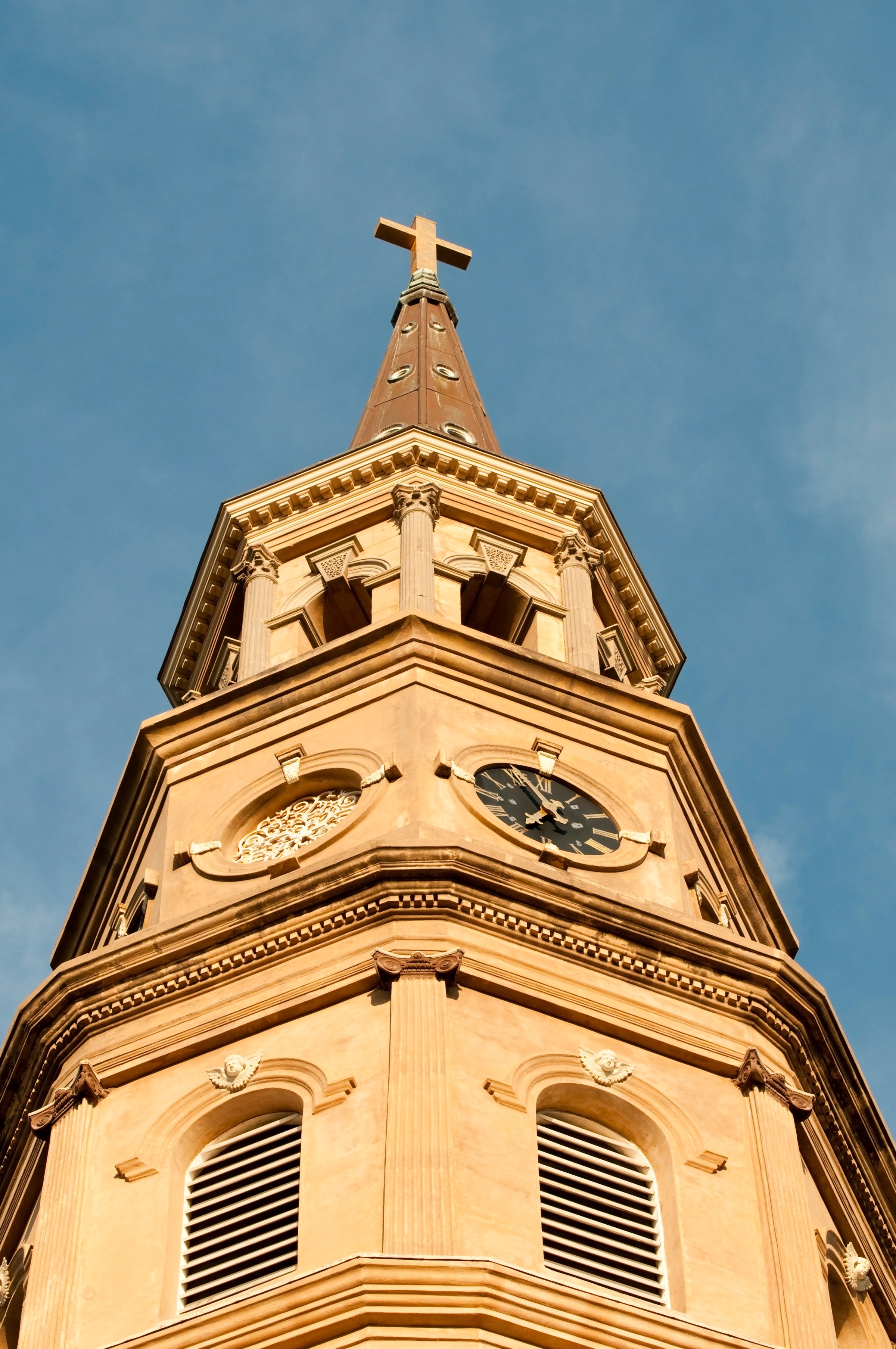Visiting Churches in Charleston, SC

Also known as ‘The Holy City’, Charleston is known for its many places of worship. Sail into Charleston Harbor by ship, and you can’t miss the city’s skyline, studded with dozens of spires.
Charleston may be known for its many churches, but it’s also known for being a religiously tolerant city, home to many religions. And while churches may be on the top of your must-see list of holy structures, there are plenty of synagogues and mosques to see here, too.
Discover how to visit Charleston churches, why Charleston is called the Holy City, and the history of some of our most famous places of worship.
List of Charleston Churches
- Cathedral of St. John the Baptist
- Cathedral of St. Luke and St. Paul
- Circular Congregation Church
- First Scots Presbyterian Church
- French Heugenot Church
- Morris Brown AME
- Kahal Kadosh Beth Elohim Synagogue
- Unitarian Church
- St. Phillips Episcopal Church
Why Is Charleston Called the Holy City?
Charleston’s nickname is ‘The Holy City’ because it’s home to more than 400 churches — many of which were established before the 1800s. Yet, the city’s moniker is also thanks to its residents’ religious tolerance. The city is home to Episcopalian, Lutheran, Protestant, Catholic, Jewish, and Muslim places of worship.
Visiting Charleston Churches
Find out how to visit our favorite Charleston churches. All of the churches on this list have historic, architectural, and cultural significance to the city of Charleston.
Cathedral of St. John the Baptist

The Cathedral of St. John the Baptist was designed in the Gothic Revival style (a very popular style of church architecture) in 1890 by Patrick Keely, a Brooklyn architect. It opened in 1907 and is the mother church of the Roman Catholic Diocese of Charleston.
Cathedral of St. Luke and St. Paul
Built in 1810, this Charleston Church is one of the oldest Episcopal cathedrals in the country and is the cathedral of the Diocese of South Carolina. The architectural style is Greek Revival, another popular style for episcopal churches in America in the 1800s. It’s marked by simple interiors and low-hanging ceilings.
Circular Congregation Church

One of the most famous churches in Charleston, the Circular Congregation Church was home to the first Sunday school in the state. Founded in 1681, it’s no wonder this is one of the city’s most famous churches, as the Greek Revival/Romanesque building is very striking.
It was founded by (not one) but three religious groups, including the English Congregationalists, Scots Presbyterians, and French Huguenots.
First Scots Presbyterian Church
This church was formed in 1731 by Scottish immigrants that broke free from the Circular Congregational Church (though the building that stands today was built in 1841). You’ll find the seal of the Church of Scotland hanging in the large window over the entrance (as well as many more Scottish symbols throughout the structure). It’s the fifth-oldest church building in Charleston.
French Huguenot Church

Another one of Charleston’s famous churches, the French Huguenot Church stands out from nearby structures, as it was painted in light pink. This church was finished in 1845, though the congregation was formed back in 1680 by 45 French Huguenots seeking religious freedom in the Holy City.
Services are held in English and French.
Kahal Kadosh Beth Elohim Synagogue
Founded in 1749, the Kahal Kadosh Beth Elohim is one of the oldest Jewish congregations in the U.S. — in fact, it’s the fourth oldest. The current structure was built in 1840 in the Greek Revival style that was popular in that decade.
Morris Brown AME Church
The Morris Brown A.M.E. was a Charleston church founded in 1818 but was forced underground in 1822 after one of its clergy members was convicted of planning a slave rebellion. The church’s pastor, Morriss Brown, fled to Philadelphia and later became the second bishop of the A.M.E. church there. The Morris Brown A.M.E. Church was officially revived in 1865 (after the end of the Civil War).
Mother Emanuel A.M.E. Church
The Mother Emanuel A.M.E. Church was founded in 1791, and the current structure was built in 1891. Originally founded in Philadelphia in 1787 by free African Americans, this location of the congregation is the oldest in the South.
Mt. Zion A.M.E. Church
Another A.M.E. Church in Charleston, this location was the first brick building in the city to be owned by African Americans. The building sits opposite the Department of Religious Studies at the College of Charleston.
Old St. Andrews Parish Church
Founded in 1706, this church is the oldest surviving church in the state. It is on the National Register of Historic Places.
Saint Mary of the Annunciation Roman Catholic Church

The first Roman Catholic Church in South Carolina, the first Saint Mary of the Annunciation was built in 1798. The current structure has stood since 1839 and was designed in the Greek style and features four Doric columns. Its stained glass windows were imported from Munich.
St. Johannes Lutheran Church
Another Greek Revival Charleston church, St. Johannes Lutheran Church, was founded in 1878 by German-American Lutherans. Services were held in German until 1910. In 1919, the church purchased the palatial Italianate home next door, which is known for its architectural features, such as a cast-iron fence, a Palladian window, and etched glass inserts.
St. Michael’s Church

St. Michael’s Church is the oldest church in the Holy City. Built in 1761, this is where George Washington prayed when he stayed in Charleston in 1791. It stands on the crossroads of the “Four Corners of the Law,” representing ecclesiastical law (the three other buildings are Charleston City Hall, Charleston County Courthouse, and the United States Post Office and Federal Courthouse).
This church is a stop on our history walking tour. If you want to know more about it, we invite you to join us!
St. Philip’s Episcopal Church

Nicknamed ‘The Lighthouse’, St. Philips Episcopal Church was established in 1670. Its ornate steeple was designed in the Wren-Gibbs tradition. The steeple was used as a lighthouse to help guide ships into the Charleston Harbor. Charles Pinckney, U.S. senator, South Carolina governor, and signer of the United States Constitution is buried here.
Unitarian Church

This Gothic Revival/English Gothic Charleston church was built in 1787 and the congregation was founded in 1772. It’s the first Unitarian congregation in the South. Behind the church is a memorial dedicated to enslaved African Americans that built the structure.
Want to know more about Charleston’s Churches? Book a private walking tour with one of our expert tour guides!
